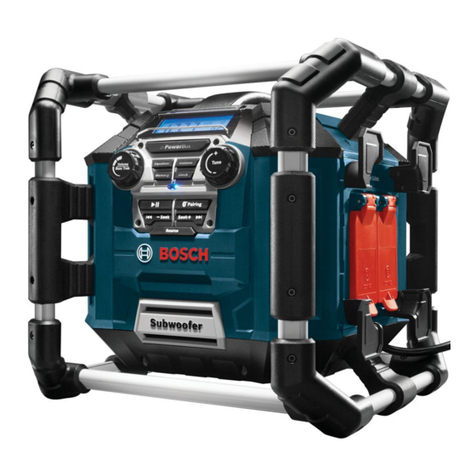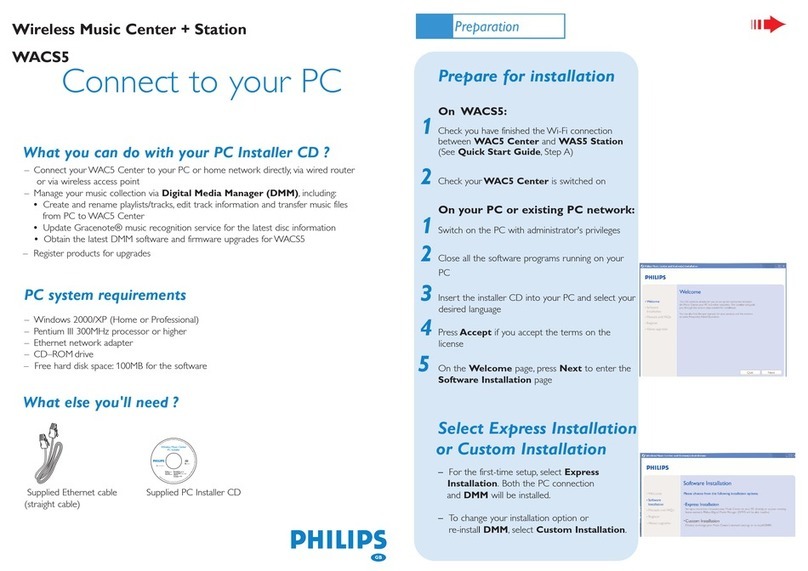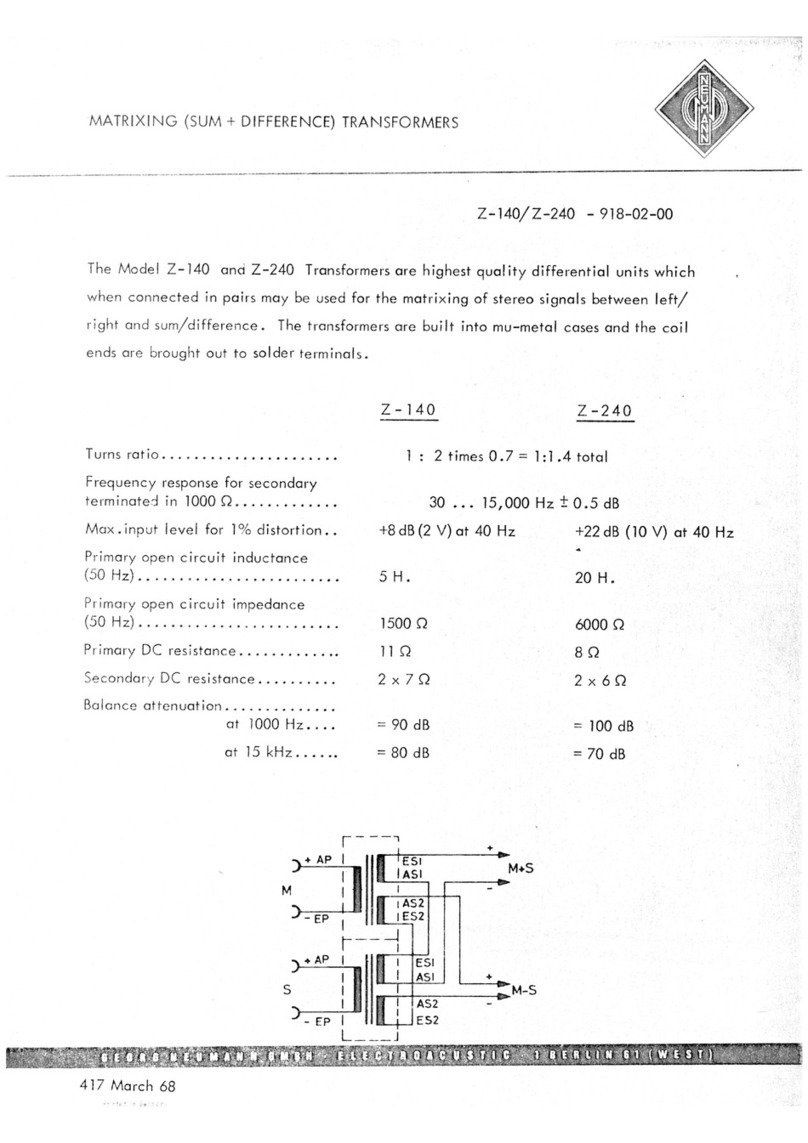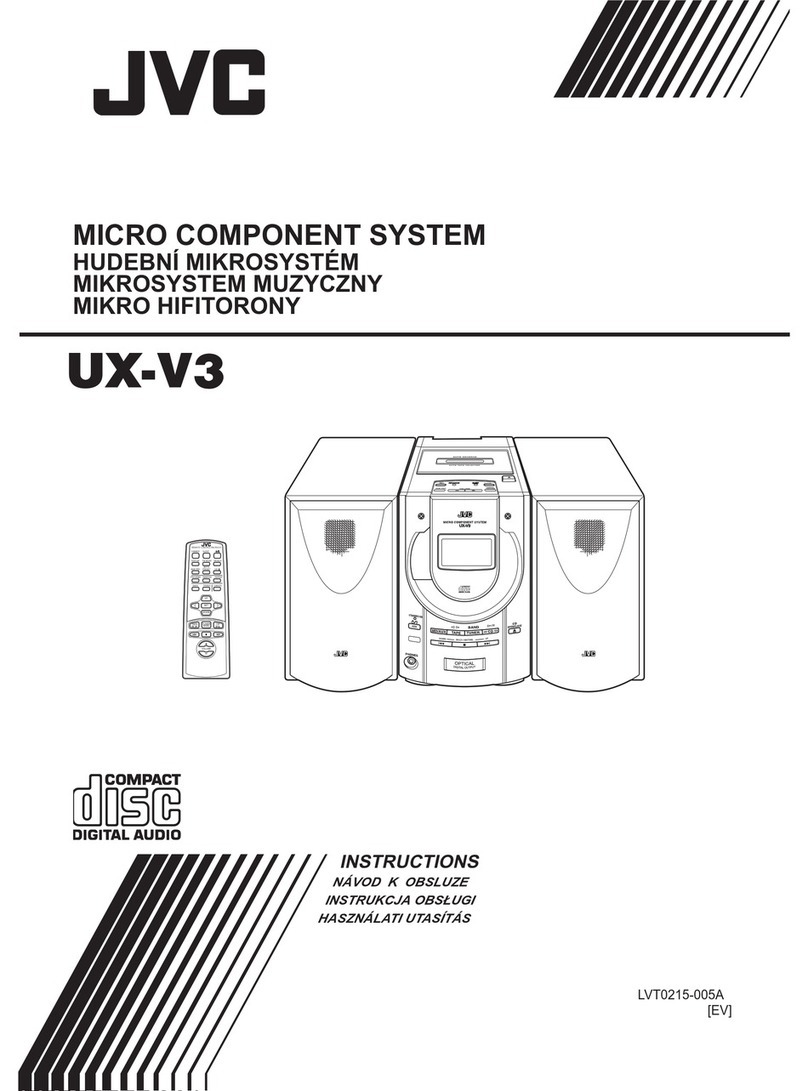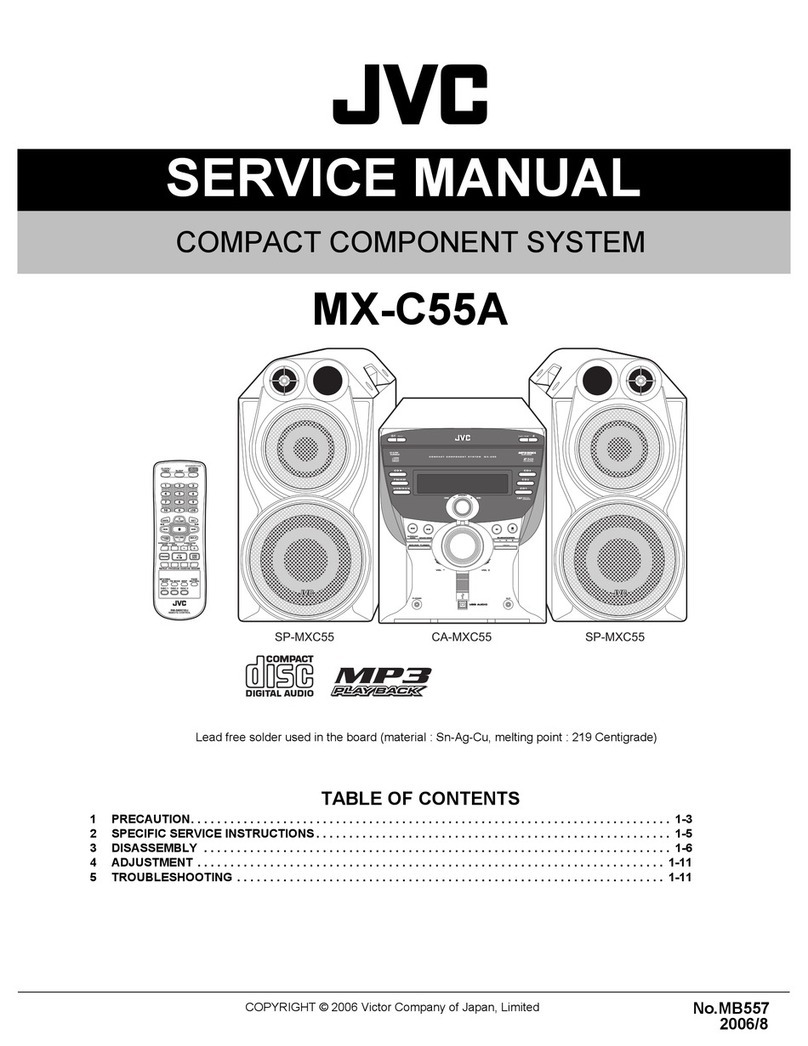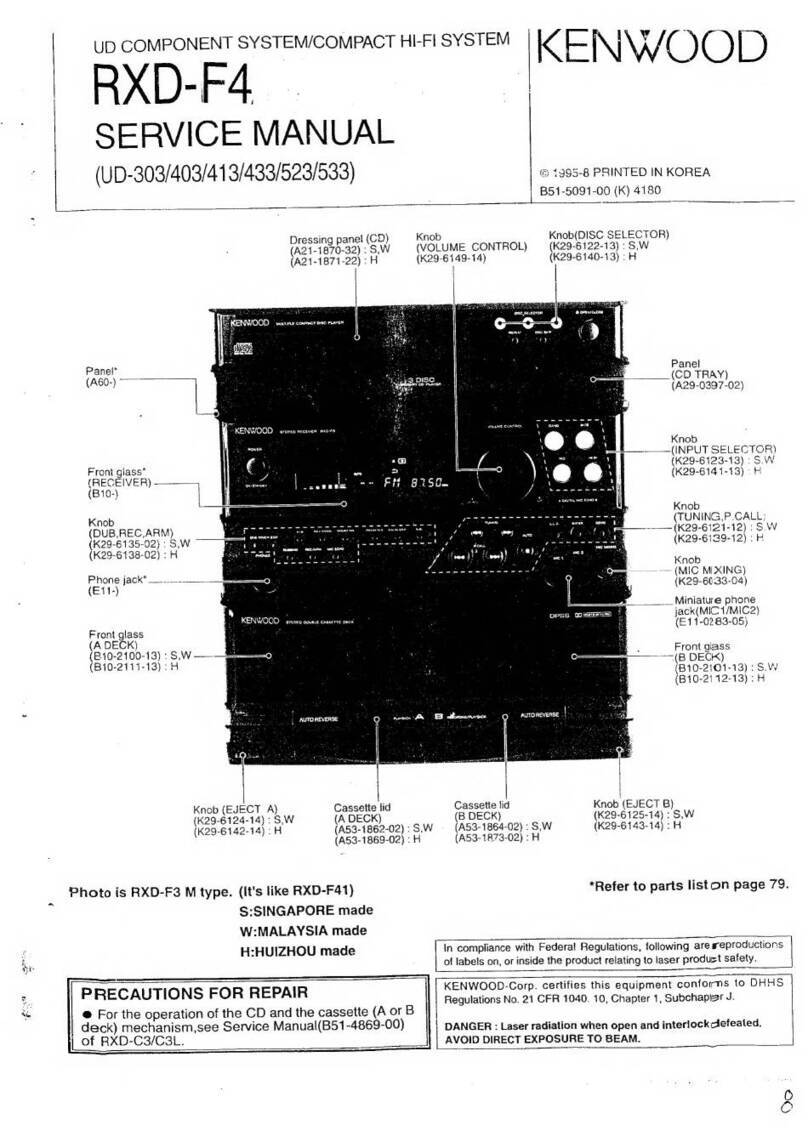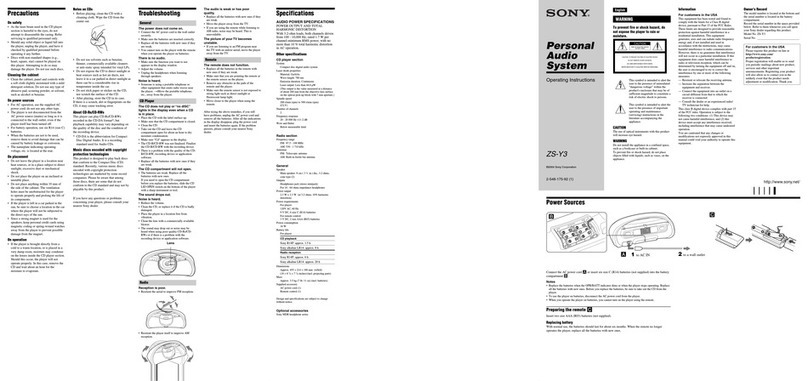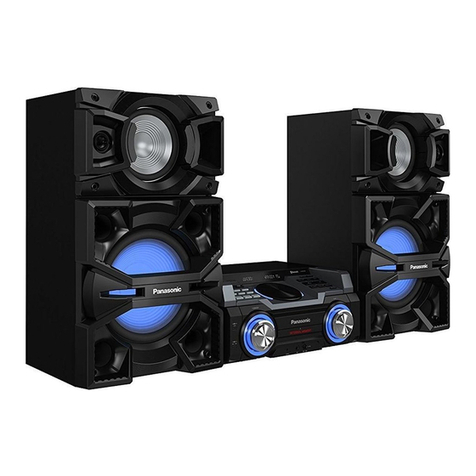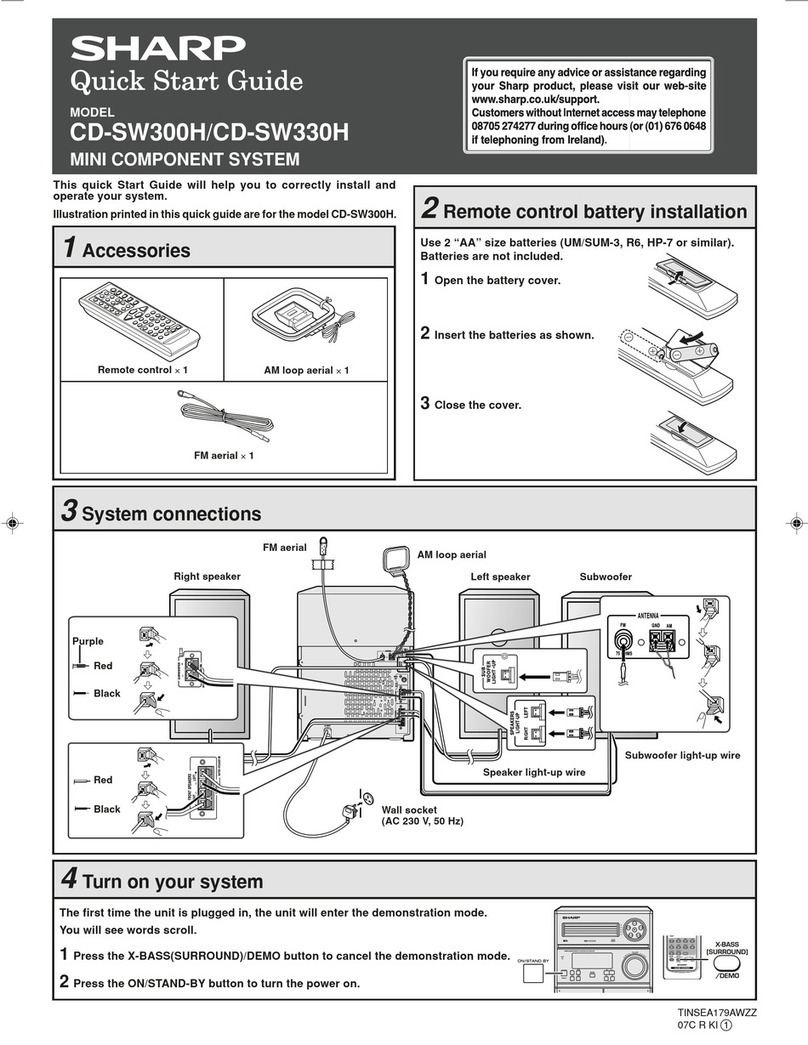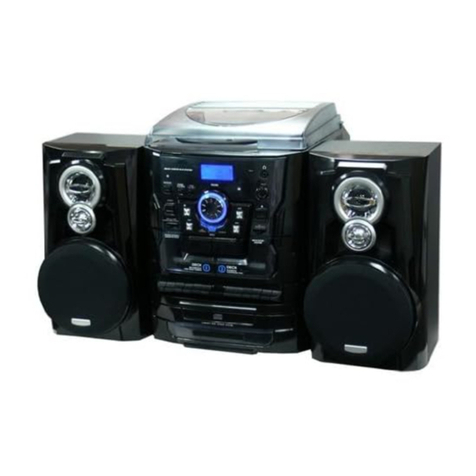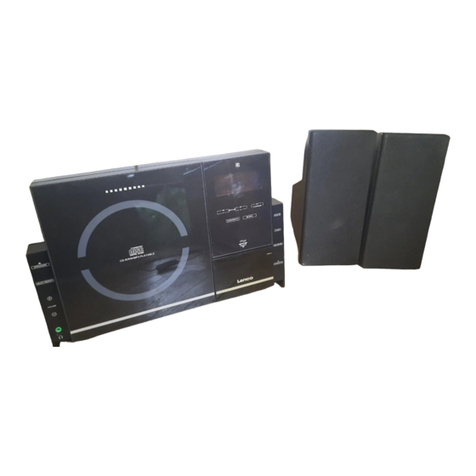Bosch DCN multimedia Guide

Installation and User Instructions
Wireless discussion systemen
DCN Wireless


Bosch Security Systems | 2007-11 | 9922 141 70691 en
DCN Wireless | Installation and User Instructions | Important Safeguards en | 3
Important Safeguards
Before you install or operate the DCN Wireless digital
congress network, you must read the Important Safety
Instructions. The Important Safety Instructions are
supplied together with the central control unit.

Bosch Security Systems | 2007-11 | 9922 141 70691 en
DCN Wireless | Installation and User Instructions | Disclaimers en | 4
Disclaimers
CobraNet is a trademark of Peak Audio — a division of
Cirrus Logic, Inc. — in the United States and/or other
countries.

Bosch Security Systems | 2007-11 | 9922 141 70691 en
DCN Wireless | Installation and User Instructions | About this manual en | 5
About this manual
Function
The Installation and User Instructions gives the
installers and the operators the necessary data to install,
configure and operate a basic DCN Wireless Discussion
System.
When you want to make a more advanced DCN
Wireless Discussion System, you also need information
from the DCN Next Generation Installation and User
Instructions.
The product index (refer to appendix B) tells you where
you can find more data about devices that can be
connected to DCN Wireless.
Digital version
The Installation and User Instructions is available as a
digital file (Portable Document File, PDF).
When the PDF refers you to a location that contains
more data, you can click the text to go there. The text
contains hyperlinks.
Admonitions and notes
The Installation and User Instructions uses admonitions
and notes. The admonition gives the effect if you do not
obey the instructions. These are the types:
•Caution
If you do not obey the caution, you can cause
damage to the equipment.
•Warning
If you do not obey the warning, you can cause
personal injury or death.
Signs
The Installation and User Instructions shows each
admonition with a sign. The sign shows the effect if you
do not obey the instruction.
The sign that is shown along with a note gives more
data about the note itself.
Admonition
General sign for cautions and warnings.
Admonition
Risk of electric shock.
Admonition
Risk of electro-static discharges (refer to the
section ’Electro-static discharges’).
Note
General sign for notes.
Note
Refer to another information source.

Bosch Security Systems | 2007-11 | 9922 141 70691 en
DCN Wireless | Installation and User Instructions | About this manual en | 6
Electro-static discharges
Electro-static discharges can damage electric
components. You must take measures to prevent
electro-static discharges when you touch PCBs (refer to
figure 1).
Conversion tables
Length, mass and temperature are in SI units. Refer to
the data below to change SI units to imperial units.
figure 1: ESD prevention
table 1: ESD prevention
No. Description
1 Safety isolating transformer
2Distribution supply box
3 Conductive compartment trays
4Electro-static voltage sensor
5 Cotton overall
6Conductive floor mat
7 Conductive boots/heel grounding protectors
8Conductive stool
9 Strap (resistance 0.5 to 1.0 MΩ)
10 Common reference point
11 Conductive bench top
12 Supply ground
312
12 11 10 9 8 7 6
4 5
table 2: Conversion of units of length
1 in = 25.4 mm 1 mm = 0.03937 in
1 in = 2.54 cm 1 cm = 0.3937 in
1 ft = 0.3048 m 1 m = 3.281 ft
1 mi = 1.609 km 1 km = 0.622 mi
table 3: Conversion of units of mass
1 lb = 0.4536 kg 1 kg = 2.2046 lb
table 4: Conversion of units of pressure
1 psi = 68.95 hPa 1 hPa = 0.0145 psi
Note
1 hPa = 1 mbar.
table 5: Conversion of units of temperature
°F9
5
--- °C32+⋅=
°C5
9
--- °F32–()⋅=

Bosch Security Systems | 2007-11 | 9922 141 70691 en
DCN Wireless | Installation and User Instructions | Table of Contents en | 7
Table of Contents
Important Safeguards ..................................................................................................................................................3
Disclaimers ......................................................................................................................................................................4
About this manual .........................................................................................................................................................5
Table of Contents ..........................................................................................................................................................7
Section 1 - System Design and Planning............................................................................................................. 11
1. Wireless network design ........................................................................................................................................................... 12
1.1 Introduction ............................................................................................................................................................................ 12
1.2 Limits ....................................................................................................................................................................................... 12
1.3 Frequency band .................................................................................................................................................................... 13
2. DCN design .................................................................................................................................................................................. 15
2.1 Introduction ............................................................................................................................................................................ 15
2.2 Limits ....................................................................................................................................................................................... 15
3. Optical network design .............................................................................................................................................................. 16
3.1 Introduction ............................................................................................................................................................................ 16
3.2 Calculation tool ..................................................................................................................................................................... 16
3.3 Limits ....................................................................................................................................................................................... 16
3.4 Control capacity ................................................................................................................................................................... 16
3.5 Power capacity ..................................................................................................................................................................... 16
3.6 Cabling ................................................................................................................................................................................... 17
3.7 Example layouts .................................................................................................................................................................... 19
4. Camera control ............................................................................................................................................................................. 22
4.1 Introduction ............................................................................................................................................................................ 22
4.2 Scenarios ............................................................................................................................................................................... 22
5. Infra-red wireless language distribution .................................................................................................................................. 22
6. CobraNet ....................................................................................................................................................................................... 23
7. User set-up .................................................................................................................................................................................... 23
7.1 Public areas and walkways ................................................................................................................................................ 23
7.2 Headphones/headsets ........................................................................................................................................................ 23
7.3 Speaking distance ............................................................................................................................................................... 23
7.4 Interpreter booths ................................................................................................................................................................. 23
8. Device set-up ................................................................................................................................................................................ 24
8.1 General ................................................................................................................................................................................... 24
8.2 Cables ..................................................................................................................................................................................... 24
8.3 Temperature .......................................................................................................................................................................... 24
8.4 Ventilation .............................................................................................................................................................................. 24
8.5 Cleaning ................................................................................................................................................................................. 24
8.6 Storage ................................................................................................................................................................................... 24
8.7 Acoustic feedback ............................................................................................................................................................... 25
9. Technical data .............................................................................................................................................................................. 26
9.1 System electrical and electro-acoustic characteristics ............................................................................................... 26
9.2 Environmental conditions ................................................................................................................................................... 27
9.3 Safety ...................................................................................................................................................................................... 27
9.4 Electro-magnetic compatibility .......................................................................................................................................... 28
9.5 Wireless devices .................................................................................................................................................................. 28
9.6 Miscellaneous ....................................................................................................................................................................... 29
Section 2 - Central Devices ...................................................................................................................................... 31

Bosch Security Systems | 2007-11 | 9922 141 70691 en
DCN Wireless | Installation and User Instructions | Table of Contents en | 8
10. DCN-WCCU Wireless Central Control Unit ......................................................................................................................... 32
10.1 Introduction ............................................................................................................................................................................ 32
10.2 Controls, connectors and indicators ............................................................................................................................... 32
10.3 Internal settings .................................................................................................................................................................... 33
10.4 Installation .............................................................................................................................................................................. 37
10.5 External connections ........................................................................................................................................................... 37
10.6 Configuration menu ............................................................................................................................................................. 43
11. DCN-WAP Wireless Access Point ......................................................................................................................................... 54
11.1 Introduction ............................................................................................................................................................................ 54
11.2 Firmware ................................................................................................................................................................................. 54
11.3 Controls, connectors and indicators ............................................................................................................................... 54
11.4 Installation .............................................................................................................................................................................. 55
11.5 External connections ........................................................................................................................................................... 57
11.6 Configuration ......................................................................................................................................................................... 57
11.7 Operation ............................................................................................................................................................................... 59
12. System configuration .................................................................................................................................................................. 61
12.1 Introduction ............................................................................................................................................................................ 61
12.2 Initialization ............................................................................................................................................................................. 61
12.3 Wireless modes .................................................................................................................................................................... 62
12.4 Microphone modes .............................................................................................................................................................. 63
12.5 Repetition rate ....................................................................................................................................................................... 64
12.6 Audio routing modes ........................................................................................................................................................... 64
12.7 Attention chimes ................................................................................................................................................................... 66
12.8 Erase requests-to-speak and speakers ........................................................................................................................... 66
12.9 Floor distribution ................................................................................................................................................................... 66
12.10 Intercom .................................................................................................................................................................................. 67
13. System operation ......................................................................................................................................................................... 68
13.1 Start the system .................................................................................................................................................................... 68
13.2 Stop the system .................................................................................................................................................................... 68
Section 3 - Contribution Devices............................................................................................................................ 69
14. DCN-WDU Wireless Discussion Units .................................................................................................................................. 70
14.1 Introduction ............................................................................................................................................................................ 70
14.2 Controls, connectors and indicators ............................................................................................................................... 70
14.3 Internal settings .................................................................................................................................................................... 74
14.4 Modes ..................................................................................................................................................................................... 76
14.5 Installation .............................................................................................................................................................................. 78
14.6 Subscription .......................................................................................................................................................................... 80
14.7 External connections ........................................................................................................................................................... 82
14.8 Operation ............................................................................................................................................................................... 83
15. DCN-MICL, DCN-MICS Pluggable Microphones ................................................................................................................ 85
15.1 Introduction ............................................................................................................................................................................ 85
15.2 Controls, connectors and indicators ............................................................................................................................... 85
15.3 External connections ........................................................................................................................................................... 86
15.4 Operation ............................................................................................................................................................................... 86
16. DCN-WLIION Battery Pack ...................................................................................................................................................... 87
16.1 Introduction ............................................................................................................................................................................ 87
16.2 Safety ...................................................................................................................................................................................... 87
16.3 Controls, connectors and indicators ............................................................................................................................... 88

Bosch Security Systems | 2007-11 | 9922 141 70691 en
DCN Wireless | Installation and User Instructions | Table of Contents en | 9
16.4 Installation .............................................................................................................................................................................. 88
16.5 Operation ............................................................................................................................................................................... 88
17. DCN-WCH05 Battery Charger ................................................................................................................................................ 89
17.1 Introduction ............................................................................................................................................................................ 89
17.2 Controls, connectors and indicators ............................................................................................................................... 89
17.3 Installation .............................................................................................................................................................................. 90
17.4 External connections ........................................................................................................................................................... 91
17.5 Operation ............................................................................................................................................................................... 92
18. DCN-WPS Power Supply Adapter ......................................................................................................................................... 93
18.1 Introduction ............................................................................................................................................................................ 93
18.2 Installation .............................................................................................................................................................................. 93
18.3 External connections ........................................................................................................................................................... 93
19. DCN-FCWD10 Flight Case for Wireless Discussion Units .............................................................................................. 94
20. DCN-WFCCU Flight Case for DCN-WCCU and DCN-WAP .......................................................................................... 94
21. DDCN-RCWD10 Roller Case for 10 Wireless Discussion .............................................................................................. 95
Section 4 - Appendices ............................................................................................................................................. 97
A Audio levels ................................................................................................................................................................................... 98
B Product index ..............................................................................................................................................................................100
C Statements for FCC & Industry Canada ..............................................................................................................................102
D Declarations ................................................................................................................................................................................103

Bosch Security Systems | 2007-11 | 9922 141 70691 en
DCN Wireless | Installation and User Instructions | Table of Contents en | 10

Bosch Security Systems | 2007-11 | 9922 141 70691 en
DCN Wireless | Installation and User Instructions | System Design and Planning en | 11
Section 1 - System Design and Planning

Bosch Security Systems | 2007-11 | 9922 141 70691 en
DCN Wireless | Installation and User Instructions | System Design and Planning en | 12
1 Wireless network design
1.1 Introduction
The DCN Wireless has three parts: the wireless
network, the DCN and the optical network. This
chapter tells how to design the wireless network.
1.2 Limits
Limit 1: Control capacity
The maximum number of devices in the wireless
network that the central control unit can control is 150.
Limit 2: Coverage area
For a good operation of the wireless part, all wireless
discussion units need to be in range of the wireless
access point. The wireless access point has a typical
maximum coverage area of 30 m by 30 m. To
determine the exact coverage area the coverage test kit
can be used.
Limit 3: Frequency
The wireless network must operate in a different
frequency band than adjacent wireless (computer)
networks (refer to section 1.3).
Limit 4: Language Distribution enabled or
disabled
If all wireless discussion units have software version 2.35
or higher, language distribution in the wireless network
can either be enabled or disabled. This system setting
will affect all units.
For information on how to enable or disable language
distribution in the wireless network, refer to section
10.6.11.
Wireless discussion units that have software version 2.35
or higher have improved signaling and behavior with
respect to subscription and connection, which is more in
line with the wired DCN units (refer to section 14.6).
The difference in signaling can be used to detect the
software version of the unit. This can be 2.35, or a
higher or lower version.
If the wireless discussion unit has an integrated channel
selector, the software version is shown on the channel
selector display when:
• the unit is switched on but is not subscribed to a
wireless network (refer to section 14.6 for
information on subscription).
• the unit is in programming mode (refer to section
14.3.1).
For information on how to enable or disable language
distribution in the wireless network, refer to section
10.6.11.
Limit 5: Number of Language Distribution
Channels
The wireless network has a maximum of 10 language
distribution channels, excluding the channel for the
floor. The total number of language distribution
channels in the system, is set via the interpreter desk
(refer to section 33.6.6.4 in the DCN Next Generation
Installation & User Instructions).
If there are more than 10 Language Distribution
Channels, only the first 10 channels will be available for
the wireless network. All higher channels will only be
available for the (wired) DCN network and/or the
infrared Integrus network.
Note
You can change the power value of the wireless
access point (refer to section 11.6.4).
Note
Wireless discussion units that have a software
version lower than 2.35 will only work when
language distribution is disabled.

Bosch Security Systems | 2007-11 | 9922 141 70691 en
DCN Wireless | Installation and User Instructions | System Design and Planning en | 13
1.3 Frequency band
1.3.1 802.11g specification
The wireless network is based on the 802.11g
specification for WiFi technology. Devices that comply
to the 802.11g specification operate in frequency bands
between 2.4000 and 2.4835 GHz.
1.3.2 Wireless computer networks
Wireless (computer) networks can also be based on the
802.11g specification for WiFi technology. In the
wireless computer networks, 13 overlapping channels
are available (refer to figure 1.1).
1.3.3 Carriers
In the wireless network of DCN Wireless, three
non-overlapping wireless carriers are available (refer to
figure 1.2).
1.3.4 Interference
The wireless network of DCN Wireless can cause
interference on wireless computer networks. You must
make sure the DCN wireless carrier does not overlap
the WLAN channel.
Refer to figure 1.3. In the example, the WLAN channel
is 3. WLAN channel 3 overlaps DCN wireless carriers 0
and 1. Therefore, use DCN wireless carrier 2.
Note
Although the system operates on frequencies
which are license free world wide, you must be
aware of country specific limitations and follow
them.

Bosch Security Systems | 2007-11 | 9922 141 70691 en
DCN Wireless | Installation and User Instructions | System Design and Planning en | 14
figure 1.1: WLAN channels
figure 1.2: DCN wireless carriers
1
2
3
4
5
6
7
8
9
10
11
12
13
2.412
GHz
GHz
2.417
2.422
2.427
2.432
2.437
2.442
2.447
2.452
2.457
2.462
2.467
2.472
2.484
2.400
012
2.412
GHz
2.417
2.422
2.427
2.432
2.437
2.442
2.447
2.452
2.457
2.462
2.467
2.472
2.484
GHz
2.400
figure 1.3: Example of interference
1
012
2
3
4
5
6
7
8
9
10
11
12
13
2.412
GHz
2.417
2.422
2.427
2.432
2.437
2.442
2.447
2.452
2.457
2.462
2.467
2.472
2.484
GHz
2.400

Bosch Security Systems | 2007-11 | 9922 141 70691 en
DCN Wireless | Installation and User Instructions | System Design and Planning en | 15
2DCNdesign
2.1 Introduction
The DCN Wireless has three parts: the wireless
network, the DCN, and the optical network. This
chapter tells how to design the DCN.
2.2 Limits
For the DCN limits, refer to chapter 1 in the “DCN
Next Generation, Installation & User Instructions”. The
DCN-WCCU has the same limitations with the
following deviations.
Make sure the following limits are not exceeded when
you design the DCN:
Limit 1: Control capacity
The DCN-WCCU wireless central control unit can
control a maximum of 95 active wired devices. The
number of passive devices is without limit. The
following wired active devices can be connected in any
combination:
• DCN-DIS Discussion Units
• DCN-CON Concentus Delegate Units
• DCN-DDI Dual Delegate Interface
• DCN-IDESK Interpreter Desks
• DCN-DDB Data Distribution Board
• DCN-FVU Voting Unit
The connected wired active devices have the same
limitations as the wireless devices with respect to the
number of audio channels (refer to section 12.4.1).
Limit 2: Single CCU only
The DCN-WCCU Wireless Central Control Unit
cannot be used in a multi CCU system.
Limit 3: Software Packages
Only use the following software packages in
combination with the DCN-WCCU Wireless Central
Control Unit:
• LBB4162/00 Standalone Automatic Camera Control
Software
• LBB4187/00 Open Interface Software
• DCN-SWSMV Synoptic Microphone & Voting
Control Software

Bosch Security Systems | 2007-11 | 9922 141 70691 en
DCN Wireless | Installation and User Instructions | System Design and Planning en | 16
3 Optical network design
3.1 Introduction
The DCN Wireless has three parts: the wireless
network, the DCN and the optical network. This
chapter tells how to design the optical network.
3.2 Calculation tool
The calculation tool makes the planning and design of
the optical network easier. You can find the calculation
tool on the CD-ROM that is supplied with your system.
3.3 Limits
Make sure that these limits are not exceeded when you
make the optical network:
Limit 1: Control capacity
The maximum number of nodes in the optical network
is 63 (refer to section 3.4).
Limit 2: Number of devices
The maximum number of devices that you can connect
to the optical network of the central control unit is 16.
The maximum number of DCN-WAP Wireless Access
Points in the optical network is 1.
Limit 3: Power capacity
The maximum power that the optical network sockets
of the central control unit can supply is 65 W (refer to
section 3.5).
Limit 4: Cables
Refer to section 3.6:
• The maximum length of a POF cable is 50 m.
• The maximum cable length (POF and GOF) of the
optical network is dependent on the number of
nodes in the optical network.
• The minimum bend radius of a 90 degree bend in a
POF cable is 110 mm.
• The minimum coiling radius of a POF cable is
110 mm.
3.4 Control capacity
Each device in the optical network has a number of
nodes (refer to table 3.1). The maximum number of
nodes in the optical network is 63.
3.5 Power capacity
3.5.1 Introduction
Each device uses power and most devices do not have
an independent power supply.
3.5.2 Power consumption
The table shows the power each device in the optical
network uses.
table 3.1: Nodes
Device Nodes
DCN-CCU 2
DCN-WAP 1
LBB4402/00 1
LBB4404/00 1
LBB4410/00 1
LBB4414/10 0
INT-TX04 1
INT-TX08 2
INT-TX16 4
INT-TX32 8
PRS-4DEX4 1
table 3.2: Power consumption
Device Watt
DCN-WAP 4
LBB4402/00 7. 6
LBB4404/00 10.5
LBB4410/00 3.9
LBB4414/10 4.6
PRS-4DEX4 6.0
Note
The Integrus transmitters do not use power from
the system.

Bosch Security Systems | 2007-11 | 9922 141 70691 en
DCN Wireless | Installation and User Instructions | System Design and Planning en | 17
3.5.3 Power supply
The CCU supplies power for:
• the optical network, and
• the units connected via the DCN cables.
Refer to figure 3.1.
If more power is necessary, you must install external
power supplies in the optical network. The devices
below can connect to external power supplies:
• LBB4410/00 Network Splitter (refer to the DCN
Next Generation Installation and User Instructions).
• LBB4414/10 Fiber Interface (refer to the DCN Next
Generation Installation and User Instruction).
3.5.4 Overload indication
Each optical network socket of the central control unit
has a red LED that comes on to show that there is a
power overload. An overload occurs when the
necessary power for the devices is greater than that
supplied. The sockets are deactivated and the devices
connected to the central control unit do not operate.
The socket checks every 8 seconds for power overloads.
3.6 Cabling
3.6.1 Introduction
Many devices in the optical network have two optical
network sockets that are interchangeable. You can use
the two optical network sockets to make a redundant
ring.
3.6.2 Definitions
The optical network uses two types of cable:
•POF
Plastic Optical Fiber.
•GOF
Glass Optical Fiber.
figure 3.1: Optical network power supply
OK Fault
Fault
RS 232
Network
12
Audio In 1 Audio Out 1 Audio In 2 Audio Out 2
Mains
Port 2
115:100-120V 50-60Hz T2.5A 250V
230:220-240V 50-60Hz T2A H 250V
RS 232 Port 1
Trunk
12
230
P<65W
DCN-WCCU
DCN-WCCU
DCN-WCCU
P<65W
P<130W
OK Fault
Fault
RS 232
Network
12
Audio In 1 Audio Out 1 Audio In 2 Audio Out 2
Mains
Port 2
115:100-120V 50-60Hz T2.5A 250V
230:220-240V 50-60Hz T2A H 250V
RS 232 Port 1
Trunk
12
230
OK Fault
Fault
RS 232
Network
12
Audio In 1 Audio Out 1 Audio In 2 Audio Out 2
Mains
Port 2
115:100-120V 50-60Hz T2.5A 250V
230:220-240V 50-60Hz T2A H 250V
RS 232 Port 1
Trunk
12
230
Note
If only one of the optical network sockets has a
power overload, the two overload LEDs come
on.

Bosch Security Systems | 2007-11 | 9922 141 70691 en
DCN Wireless | Installation and User Instructions | System Design and Planning en | 18
3.6.3 Optical fiber length
Because of optical attenuation, the maximum length of
optical network cables (LBB4416) is 50 m. You can use
GOF and fiber interfaces to increase the distance
between devices to a maximum of 1500 m.
3.6.4 Cable couplers
You can use the LBB4419/00 Cable Couplers to
connect optical network cables to each other. A cable
coupler causes optical attenuation. Each cable coupler
decreases the maximum distance between two devices
in the optical network (normally 50 meters) with
20 meters.
3.6.5 Maximum cable length
The maximum cable length (LBB4416 and GOF) of the
optical network is dependent on:
• The number of nodes
• The number of LBB4414/10 Fiber Interfaces
Do as follows:
1 Find the number of nodes of each device from the
node value table (refer to table 3.1). Add together the
nodes of all devices.
2 With the value of step 1, use the graph (refer to
figure 3.2) to find the maximum cable length without
LBB4414/10 Fiber Interfaces.
3 Count the number of LBB4414/10 Fiber Interfaces.
Each fiber interface decreases the maximum cable
length from step 2 with 18 m.
Note
If the distance between two devices is less than
100 m, use a network splitter between devices
to remove the use of fiber interfaces. Use only
the trunk sockets of the network splitter in this
case.
figure 3.2: Cable correction graph
950
5010152025
Nodes
30 35 40 45 50 55 60 63
1050
115 0
1250
1350
1450
1550
1650
175 0
1850
1950
2050
2150
Max. cable length (m)

Bosch Security Systems | 2007-11 | 9922 141 70691 en
DCN Wireless | Installation and User Instructions | System Design and Planning en | 19
3.6.6 Bending
The minimum bend radius of a 90 degree bend in an
LBB4416 cable is 110 mm (refer to figure 3.3). A
180 degree bend is the same as two 90 degree bends.
3.6.7 Coiling
The minimum coiling radius of an LBB4416 cable is
110 mm (refer to figure 3.4).
3.7 Example layouts
3.7.1 Introduction
The number and type of devices that make the optical
network give the layout of the optical network. This
chapter shows examples of the possible layouts of
optical networks.
figure 3.3: Bend radius
figure 3.4: Coiling radius
R=110 mm
R=110 mm

Bosch Security Systems | 2007-11 | 9922 141 70691 en
DCN Wireless | Installation and User Instructions | System Design and Planning en | 20
3.7.2 Basic optical network
Refer to figure 3.5 for an example of a basic optical
network.
3.7.3 Extended optical network
Refer to figure 3.6 for an example of an extended
optical network.
3.7.4 Redundant cables
The example of the extended optical network (refer to
figure 3.6) has no redundant cable. If the cable between
the central control unit (DCN-WCCU) and the wireless
access point (DCN-WAP) breaks, the central control
unit cannot transmit data to the wireless access point. A
solution for this problem is to use redundant cable (refer
to figure 3.7 for an example).
The example of the system without redundant cable
(refer to figure 3.6) has no connection between the
cobranet interface (LBB4404/00) and the central control
unit (DCN-WCCU). The example of the system with
redundant cable has a connection between the Cobranet
Interface and the central control unit. This connection
makes a ring. If a cable breaks, the optical network
continues to operate.
The total power of all devices in the redundant optical
network is 65 W. If the optical network is defective near
the central control unit, the other socket can supply
power to all of the optical network.
figure 3.5: Basic optical network
figure 3.6: Extended optical network
DCN-WCCU
DCN-WAP
DCN-WCCU
DCN-WAP
LBB4404/00
INT-TX
PRS-4DEX4
figure 3.7: Redundant optical network
DCN-WCCU
DCN-WAP
LBB4404/00
INT-TX
PRS-4DEX4
Other manuals for DCN multimedia
5
Table of contents
Other Bosch Stereo System manuals

